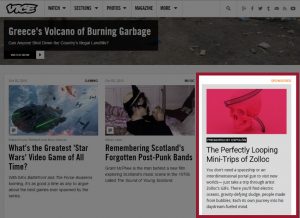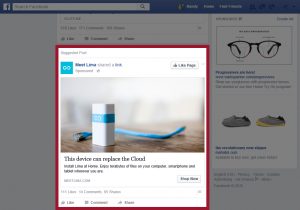First, let’s get the terminology down. According to the Native Advertising Institute (NAI), “this is an audience-first discipline that is focused on creating the best possible audience experience by providing relevant and useful content in a format that adds to the reader experience and stays true to the form and function of the media.”
Native ads and Sponsored LinkedIn posts
Think of a LinkedIn sponsored post as a very simple example. Native doesn’t mean paid search (PPC) or inline ads (like a Facebook ad). It must follow the form, feel, and function of its host medium.
Advertorials, sponsored content, and advertiser-funded broadcasts all fall into the category. Best practice is that the publisher clearly marks these ads as “sponsored” or “promoted.” The industry also considers recommendation widgets to be “native.”
So why are native ads important for enrollment professionals? Research shows that millennials are exhibiting greater and greater antipathy toward “intrusive” digital and other advertising and they are responding with their clicks (or lack thereof).
At the same time, millennials have a very high tolerance for native ads. They grew up in a world where they consumed content/news online, and where content was mixed with brand messaging on platforms such as Facebook and Instagram.
Native ads build trust through brand, content, and publication
As trusted digital publishers for this audience continue to thrive (Spotify, Tumblr, Pitchfork, Vice, etc.), their authenticity, audience engagement, and authority can provide a powerful backdrop for your brand story. For native advertising to be effective, however, “all three elements – the brand, content, and publication – need to complement each other.
If one of those elements doesn’t fit, then you lose the trust of the audience and the content becomes nothing more than a clumsy piece of traditional advertising.” (James Morris of MediaCom, blogging for the NAI).
Why kinds of content are most effective in the native environment? According to Adyoulike, a native ad platform provider (Adweek, March 17, 2015), these include list-based articles (“7 Things…”), feature articles, video, and social posts. You’ll note that the content is NOT about the sponsor; the content is relevant to the wants and needs of the target audience.
The right way to create a native ad
Let’s look at a hypothetical case to give you an idea of how this all works. Suppose you have an outstanding graduate program in entrepreneurism, and you’re looking to recruit top candidates.
Traditional marketing might be to run a banner ad on the Wall Street Journal website, or in the “gutter” on LinkedIn. With the native approach, you could place inline piece promoting an article on the “15 Top Personality Characteristics of Budding Entrepreneurs.”
Your brand gets a boost (almost 20% of 18-25 year olds report that native advertising positively affects their view of a brand), you’ve begun to engage your audience, and, if you’ve done this properly, you’ve gained permission to engage in further dialog with a qualified prospect.
Take a look at this example of a native ad done well:





